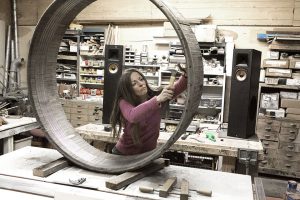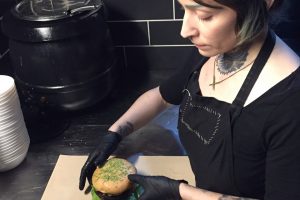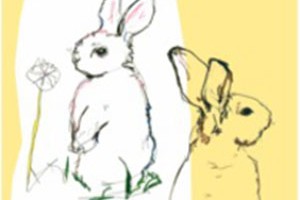“The perfect definition of an artist: different declarations of the same obsession.”
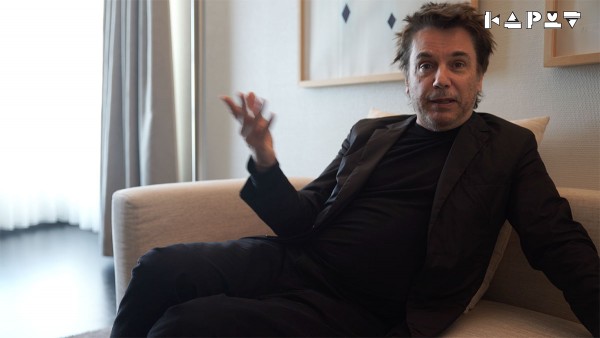 He may have reached the ripe age of 67, but futurist French musician, composer and producer Jean Michel Jarre is far from being tired. The son of famous film composer Maurice Jarre (his father did the soundtracks for “Lawrence of Arabia” and “Doctor Zivago”), his early training came from Pierre Schaeffer in the early 70s, the period of Musique concrete. But Jean Michel would leave academia behind to take on the biggest stadiums and most bizarre venues for his synthesizer compositions, most famously with his album „Oxygéne“ which has sold 18 million copies to date.
He may have reached the ripe age of 67, but futurist French musician, composer and producer Jean Michel Jarre is far from being tired. The son of famous film composer Maurice Jarre (his father did the soundtracks for “Lawrence of Arabia” and “Doctor Zivago”), his early training came from Pierre Schaeffer in the early 70s, the period of Musique concrete. But Jean Michel would leave academia behind to take on the biggest stadiums and most bizarre venues for his synthesizer compositions, most famously with his album „Oxygéne“ which has sold 18 million copies to date.
This autumn sees Jean Michel Jarre release „ELECTRONICA 1: The Time Machine”, the first of two albums where he’s collaborated with a wide spectrum of contemporary electronic artists like Boys Noize, M83, Air, Vince Clarke, Little Boots, Fuck Buttons, Moby, Gesaffelstein, Pete Townshend, Tangerine Dream, Laurie Anderson, Armin van Burren, Massive Attack, John Carpenter and Lang Lang.
A hell of a list as Jarre himself puts it, but of course there were good reasons for each of these collaborations. Thomas Venker met Jean Michel Jarre to learn about this project and most of all to discuss the role of curiosity in the life of an artist.
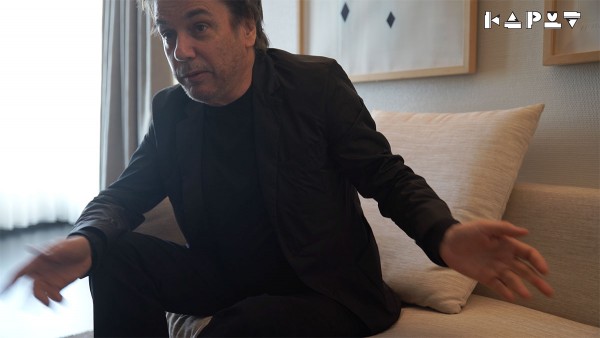 Mr. Jarre, I want to zero in on two topics today: your new album „ELECTRONICA 1: The Time Machine” of course and secondly curiosity. With such a wide variety of collaborators on the album I guess you must be very curious. My question is, how do you keep this inquisitive mind going throughout a career?
Mr. Jarre, I want to zero in on two topics today: your new album „ELECTRONICA 1: The Time Machine” of course and secondly curiosity. With such a wide variety of collaborators on the album I guess you must be very curious. My question is, how do you keep this inquisitive mind going throughout a career?
JMJ: It is a state of mind. You could become it either through the education in your childhood or you could devellop it on your own if you wish. It is really interesting that you start this conversation like this as I think that curiosity is a big part of my DNA. One of the elements myself and all my collaborators share, among others, is curiosity. If you take such different artists as Massive Attack, Air, Moby or Laurie Anderson, they all have this desire for curiosity in common.
These are all established artists who you could argue found their one sound long time ago and to some degree they reproduce that – in other words maybe they’re not the most curious ones. But when you are in the studio with them, you still find the enthusiastic kid next to you?
These days in music it is about being the flavour of the week. As an artist you could be the flavour of the week once, twice, maybe or a few times in your life, but this is not the goal of an artist. The life of an artist is in the middle, and curiosity creates as a paradox your own instant recognizable identity. I met once, close to the end of his life, Federico Fellini, and he told me something which really impressed me and comes up now by what you are saying. He said: „All my life I thought that I was doing different movies, and by the end of my life I realize I was always doing the same one.“ He meant different declarations of the same obsession. This is a perfect definition of an artist. If we have something to say, we have one thing to say – and we spend all our time to come up with declarations. If you look on the works of The Beatles, Stanley Kubrick, Pablo Picasso or Johann Sebastian Bach, they all tell you one thing – that’s what we call style. Curiosity is what makes you consistent, what makes you nurging, this is not necessarily linked with success or hype. A real artist is not linked with hype at all, he is not obssesed by that. He could become hyped in one moment, and than not anymore again.
On the list of people you collaborated with for this album, some obviously overlap, but then also some seem quite surprising. Do you really like the music of all those different artists or do some of them just bring something interestingly different?
With this project I wanted to gather people where I feel inspiration, who are part of the same family or tribe. All this people are coming from the same gallaxy, there is a reason for their featuring approach. These days it became normal in showbusiness to namedrop artists on your record: you send a file to someone you never meet, you eben never talk to, it all just goes through the hands of managers. It was the absolute reverse here. For every encounter I physically met the artist I collaborated with. I travelled a lot, which was an initital joy for me. The idea was to met everybody in his natural environment, Vince Clarke in Brooklyn, Tangerine Dream 100 kilometres outside of Jena – I took the train from Paris and then a car to see Edgar Froese. That was part of the dogma. It created something totally different, it created what I call authenticity. We wanted to built up something from scratch. These days we are connected through the internet, we don’t talk to our neighbour anymore. We musicians may have to chance to join each other on stage from time to time, but it is a rare thing to start a project from scratch together. I spoil that this is the reason why everybody I conntacted said yes and accepted.
But to come back to your question: For all of them, there is a reason why. Yes, I like the music, otherwise I would not have worked with them.
It is interesting that you travelled to all the studios of them as one would suggest that they come to you as the initiator of the project. Did you feel that it will only get the most artistically interesting outcome if you challenge yourself by going into their environment? I’m thinking of the example of working in the studio of Tangerine Dream and try to achieve something with their set-up rather than yours…
It was a very interesting exercise for me to confront my habits and rituals as much as for all of us within the process. It is all about confrontation of those silly ways of doing things – you achieve this by visiting the world of somebody else. For example when Moby and I started working in the studio the first he did was to play a D-minor with 3 notes on the keyboard. I mean, this is Moby, and what he did every four year old could come up with: Bang. This is what makes style. He has a very pointed, very Jackson Pollock approach to composition, putting one sound and then another sound and then working on one bar and then going to the next one and the next… I work exactly the opposite way. I come from a global vision and then I go into the details. All these things which apprear as little details were fundamental in the decision to consider this project.
So to stay with Moby here, you mixed up his micro perspective working process with your macro perspective approach?
Well, he obviously also had his own vision of the track. Or take for example Laurie Anderson. I’ve known her for quite a while, she is for me one of the most influential artists from the New York scene, not only in music, also in video and visual arts. She has a very special relationship with technology and brought by that a different approach to sounds to the studio. I had decided we should do together a song I wrote. I did send her the music and asked if she would agree to collaborate on that with mainly the vocal part. She agreed and then we discussed my song idea. I wanted to do a love song with a connected object, by that I mean to have by touching an almost sensual relationship with your smart phone for example. We touch those things more than our partners most of the time.
Obviously Laurie was planning to play the role of the smart phone. Then I wrote the lyrics in one night, and the other night she came to the studio in Los Angeles and we spent together time on this quite surreal track. First I suggested that we should process her voice – but she has such an extraordinary voice, so we agreed to put just this little effect on it and not processing it and keeping it the way it is. This is another example how the collaborations derived from each situations. Every collaboration has been specific.
I have to say, that “Rely on me”, the track with Laurie Anderson, is such a great one, especially after „Zero Gravity”, your cooperation with Edgar Froese of Tangerine Dream, I liked that …
… shift, contrast?
Yes, it shows clearly the magic of a musical journey.
Thank you for saying this, cause I always try to invest a lot of thought into the order. You have Moby, Gesaffelstein, The Who, Laurie Anderson, Armin van Buuren, Massive Attack… you could say: what the Hell?! But all things are part of a journey. It is like here, while talking to me you are thinking about your next question, while the lights shine in here, the sky is blue outside, the flowers and the coffee smell, all these elemets create the story. What I like about this project, and I am able to say that as I am not the only one involved, is the diversity of it which is quite in face with the life within society today. We are having the greed for zapping and at the same time the desire to dream about the meaning of life. Why is Facebook so successful? Because people want to create a meaning for their lives.
So you see a certain zapping aspect within „ELECTRONICA 1: The Time Machine” as the tracks are so different? Even if I have to say that the actual album does not sound as divergent as the list of collaborators makes one think – just „If..!”, the song with Little Boots, stands out a lot cause of her particular voice and also the Pete Townshend and Armin van Buuren ones. That said: I have the feeling that some of the people on the list came closer to you.
After all, before all: it is my album. It is not van Buuren’s album and also not Pete Townshend’s album. I am really moved by the fact that they all collaborated with me and gave me the final cut. Let’s take the two totally different examples you mentioned, Burren and Townshend: I was interested what my imagination, my fantasy would make out a collaboration with the sound of The Who and trance music – it was not about pure rock music and also not about pure festival sound. But what I like in trance music is that certain joy within which has a bit of neo classic music, if you get rid of the beat. I am talking about the soundscape. So the interaction with Armin was set to go into this direction. Pete and I had a special connection out of several reasons. He is the one who originally integrated the sequencers and electronic synthesizers in rock music. He was the first one with his song „Baba O’Riley”, a tribute to Terry Riley. He is a bit older than me, when he was doing this I was working in Paris as an assistent in a recording studio, preparing sessions for Terry Riley. Pete has been also the first one to create a rock opera as an art form. As a student I was absolutly obsessed by german opera from Wagner, the idea to create something more as music by cooperating with carpenters, filmmakers and painters. That was a major influence on me when I was preparing my concerts, I used the carpenters and painters of my generation: people working with electronic lights and videos. What I say is: I wanted to create my fantasy of the Who, a mini electronic rock opera. You have so far only heard one out of threee pieces we did together, the one which is the most electronic. I keep the others on hold for album two as it is too complex in that context.
To come back to the curiosity aspect. Your father was a composer too. What did you learn from him?
Unfortunately I would have liked to learn from him, but my parents separated when I was five years old and I hardly had any relationship with my Dad. He was living in America, me in Europe. Most of the times it is better to have an open conflict with your father than having nothing at all – nothing is the worst. He passed away five years ago and it took me a lof of time to get all over this. To answer your question: propably I developed my curiosity out of frustration, I tried to be curious on my own as I had not my father’s advice to follow and by that replace the feeling that my father didn’t give me an advice how to survive as an artist. I learned to feed myself. I never thought about that before, but yes, I think I am somebody who is very curious, it is part of my life.
There is this story that your mother took you to a jazz club on your birthday where Chet Baker was playing.
My mother was a great figure in the french resistance during the second word war. She has been caught by the Nazis three times and she escaped every single time. She was an extraordinary woman. During the post war period she became quite close with a woman who opened the first jazz club in Paris called Le Chat Qui Pêche. My mother was visiting that friend and as a kid in the weekend, just hanging around, I was going down and listening to the guys without knowing who they are. They were people just John Coltraine, Don Cherry and Chet Baker. On my 8th birthday the guy with the trompet set me on the piano and played a song for me – it was Chet Baker. Of course I had no idea who he was. That was probably one of my first physical relationships with music. Each time I think about it I still feel the air on my chest. This is something like an almost sexual relationship with sound.
Well, and I get goose bumps hearing you talking about it. That is exactly what I was thinking about: those moments which open up your world. When somebody like Baker or Coltraine is playing, the texture of his music is so impressive that if you are young your journey starts from that point on. There is so much to search for! It is not an one dimensional sound, it is a sound you wanna…
… exactly. It is very interestting what you are saying: for me jazz is like abstract painting, dealing with texture and layers. That has been a major influence on me, to becoming involved with electronic music. For me electronic music is like cooking, a sensual almost sexual activity, where you are dealing with frequencies and textures in a very organic way – you are dealing with things which are touchable. Like jazz music for me abstract painting is in real concrete painting, Pollock, Dubuffet, Hartung are dealing with real stuff; texture, paint, acting with fingers, touching… where Renoir or Michelangelo are for me abstract because it is a totally intellectual representation of the world. Electronic music is exactly like that, jazz too. It is, as you said, a sexuell apprach of harmonies and textures, something beyond notes and chords, it is something else.
You also learned from Pierre Schaefer. In 1969 you joined, in the middle of the Musique concrete era, his Groupe de Recherches Musicales. Today you are an artist in your own right and have been for a long long time… I wonder if you could date the moment when you realized that you made the pivot from a young student to a … teacher yourself?
He was absolutely my mentor. We have to understand that electronic music is coming from two countries, Germany and France – Pierre Schaefer and Pierre Henry in France inventing Music Concrete, and Stockhausen in Cologne dealing with electronic sounds. It is not coming from America, it is coming from Continental Europe. Pierre Schäfer actually told me something which changed my world: „Music is not made only of notes and harmonies, it is made of sounds.“ These days DJs are sound designers without even knowing it, they have a total sound-design approach to music. I was in this intellectual centre where people research with a scientific approach, classify the sounds of the universe and so on, but after a while Schaefer told me: „Whatever you needed, now you have it. You must go in front of the audience. Don’t waste your time by research in the labaratory, your role is somewhere else.“ And then he gave me the push.
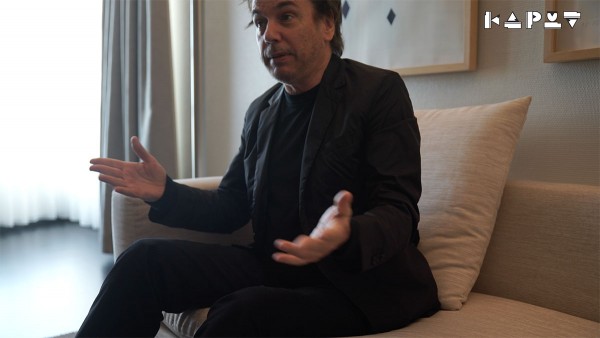 When you had huge success with Oxygéne and the record after that, „Equinoxe“, how did you manage to leave that behind and come up with records like the Jacques-Yves Cousteau dedicated one „Waiting for Cousteau“or the new one. Did it take you a lot of energy to step away from the sounds you were used to, the sounds which were successful? Or did it all feel natural?
When you had huge success with Oxygéne and the record after that, „Equinoxe“, how did you manage to leave that behind and come up with records like the Jacques-Yves Cousteau dedicated one „Waiting for Cousteau“or the new one. Did it take you a lot of energy to step away from the sounds you were used to, the sounds which were successful? Or did it all feel natural?
Yes, it felt very natural. Again, I think I always consider success as result of failures in the life of an artist. We are in the middle of ups and downs. I wanted to explore all things. This is still going back to your first question on curiosity. For me there are three elements which make you creative: a mixture of innocence, desire and curiosity. Innocence is the freshness you have to keep, you could be 90 years old and being still absolute innocent, not naive so. Desire is the fact that you want to built a song like an architect, this kind of naughty boy approach to say „yes, let’s try this and let’s try that“. And curiosity is the will to explore things and act like a beginner.
You have this song „Happiness is sad song“, and there is the song „Happiness is a warm gun“ by The Beatles. Do you think those two share an essence just expressed differently?
I have always been fascinated by any art form reflecting the contrast of happiness and sadness, of joy and the melancholy hidden behind it. This is true for all artist I like, from Lars von Trier to The Beatles or Massive Attack. If I have to make a list, I would list all the people I worked with for the album: they all have this contrast between innocent joy and underground melancholia in common. For me it is the sadness of a clown. As a child I was always crying in front of the clown – clowns are not funyn at all , it is the most dramatic and sad element of a circus.
It is kinda funny that the first track I did when working on „Musik aus Raum und Zeit“ was called „Happiness is a sad song“ – when I write my biography one day, this would be a fitting title. This is what makes me produce music and also what makes me respond emotionally to music. It is also true for Chet Baker that „Happiness is a sad song“.
Well, it is a contrast which comes alive in a lot of art forms, also in films and visual art. Just think of the blue sky, an image that always seems to have a certain darkness within.
„Blue Velvet“ is like this. You see the blue sky in the beginning and then a dead ear. It is exactly that.
We saw lately a hype around old synthesizers. As you are a man of synthesizers, I am interested in your opinion on this topic, especially as you are also know to be open for experiments like working with lasers for example.
These days plug-ins are at least as good as original instruments. For me the idea is more important than the instrument. It is the wonder of our age that you can also work with virtual plug-ins. There is no hierarchy in instruments anymore, there is just a choice relevant to the idea you want to express.
For „ELECTRONICA 1: The Time Machine” you also worked with Edgar Froese of Tangerine Dream who died not long afterwards. How does the song feel for you now?
For me this is really strange feeling. I should have come 20 years before…. He was so moved that I came all the way to him to the outskirts of Jena. For me the track feels like between two worlds, it pre-empted what happened a few weeks later. It is the last track of Tangerine Dream and in that for me the record is dedicated to the memory of Edgar, it is a link with time and timelessness of music through him.
Do you think a lot about the eternity of your music?
No. But I think that if you start thinking about it you start to be linked to timelessness. You have to forget the notion of time to achieve timelessness.
Mr. Jarre, I could keep on talking with all the questions in my pocket, but I am afraid our time is over!







